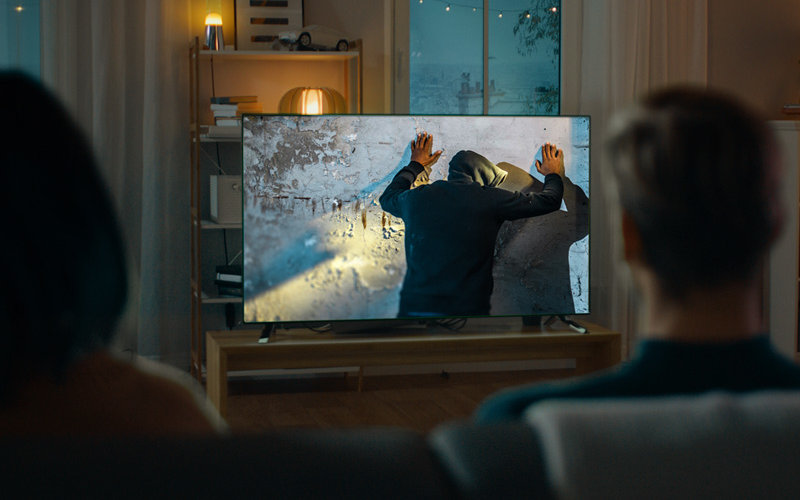
In television, there is a long history of stereotyping Black people as “criminals, disposables and people living on the periphery of the narrative,” said Anthony Sparks.
As a Black actor, writer, producer and current showrunner for the Ava DuVernay- and Oprah Winfrey-produced television series “Queen Sugar,” the associate professor of cinema and television arts at Cal State Fullerton has both experienced the effects of stereotyping and worked to flip the script.
“Casting in racial ways over and over again affects our understanding. Images are internalized. We attach meaning to Black bodies as safety hazards, even if it’s disconnected from reality. And TV has been pumping this into our national imagination for decades.”
In the current climate of social unrest with protests against police brutality and systemic racism, there is some discussion on how TV has shaped Americans’ understanding of the police as well.
“The police procedural has long been a part of TV,” noted Hunter Hargraves, associate professor of cinema and television arts. “Post World War II, there was strong conformity to promote the public good and the narrative that ‘we trust the police.’ ‘Dragnet’ had consultants from the Los Angeles Police Department giving them police lingo and perspective. Dick Wolf, creator and executive producer of NBC’s ‘Law and Order’ franchise, glamorized the police.”

Hunter Hargraves, associate professor of cinema and television arts
Hargraves continued, “In the 1980s and 1990s, the genre moved toward more realism with shows like ‘Hill Street Blues.’ In the late 1980s, the show ‘COPS’ was shot to look like homemade video giving viewers a direct look at crime, but it was from the vantage point of the police.
“More recent shows like ‘The Wire’ and ‘The Shield’ introduced the concept that the police are not always morally good, but rarely is the police narrative completely challenged.”
Changing the Narrative
Due to social media and streaming platforms, however, narratives about African Americans and the police are starting to change, said Hargraves. These two technologies have allowed more people with different perspectives to tell stories and challenge the status quo.
“Thinking about TV news,” he remarked, “during the 1992 L.A. riots, coverage was from helicopters, which aligned with the gaze of the police. Now the Black Lives Matter protests look different. Because of cell phone footage and social media, we’re getting the protesters’ point of view.”
Streaming platforms have provided “more room for diverse, multiracial and multicultural views,” Hargraves added. “Millennial authors, many of whom are more diverse, are writing, directing and deconstructing experiences from the viewpoint of younger people of color.”
Sparks agrees. “The people who make the show are the lens through which the story is told. For example, many cop shows are mostly written by white men. You can’t detach that reality from the reality on the screen.”
In fact, when Sparks was a young actor, he quickly realized that the amount and type of work he could get, and the way in which he was asked to represent onscreen was determined at the writing, producing and showrunning level. He moved in that direction to have a seat at the table.
“Empowered Black voices at or near the top of the food chain bring a different point of view,” he explained, while emphasizing that TV still has a long way to go: “On roughly 500 scripted shows on TV today, there are probably only 10 Black showrunners or executive producers.”
To learn more about Cal State Fullerton’s commitment to diversity and anti-racism, visit Titans Together.
Contact: Karen Lindell, klindell@fullerton.edu